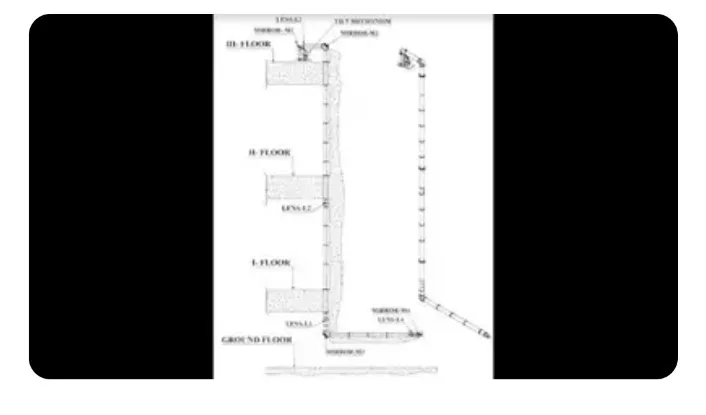ROORKEE: In a unique endeavor, scientists at Roorkee’s Central Building Research Institute (CBRI) have devised a distinctive system for the newly constructed Ram temple in Ayodhya. The system ensures the appearance of a ’tilak’ on the forehead of the idol in the sanctum sanctorum using sunlight, mirrors, and lenses.
Scheduled for display on Ram Navami, falling on March 29, marking Lord Ram’s birth anniversary according to the Hindu lunar calendar, the project named ‘Surya Rashmiyon Ka Tilak’ (anointment by sun rays) is a mechanical system that requires no electricity or battery and employs brass instead of iron or steel.
S K Panigrahi, the chief scientist and principal investigator of the project, highlighted, “We used only brass in making our manually operated system.” The circular ‘tilak,’ measuring 75 mm, will grace Lord Ram’s forehead at noon for three to four minutes on Ram Navami in the Chaitra month, using sunlight redirected by the system.
This arrangement is exclusively planned for the occasion of Ram Navami every year. The optomechanical system, set to be installed on the temple’s third floor, incorporates high-quality mirrors (M1 and M2), a lens (L1), and vertical piping with lenses (L2 and L3) fixed at specific angles. Ground floor components include mirrors (M3 & M4) and a lens (L4). Panigrahi explained the process, “Sunlight falls on M1, travels through L1, M2, L1, L2, M3 (installed outside the garbha-griha), and finally on M4, bringing a ‘tilak’ on the forehead of the idol.”
The Bengaluru-based Optics & Allied Engineering Pvt Ltd handled the fabrication of mirrors, lenses, and the tilt mechanism for the temple at no cost. The Indian Institute of Astrophysics provided consultancy to CBRI for the optical design. The CBRI team developed the mechanism to adapt to the changing position of the Sun on Ram Navami. Bisht explained, “Detailed calculations show that the English calendar date of Ram Navami repeats every 19 years. With this, we have developed a mechanism operable by anyone.”







